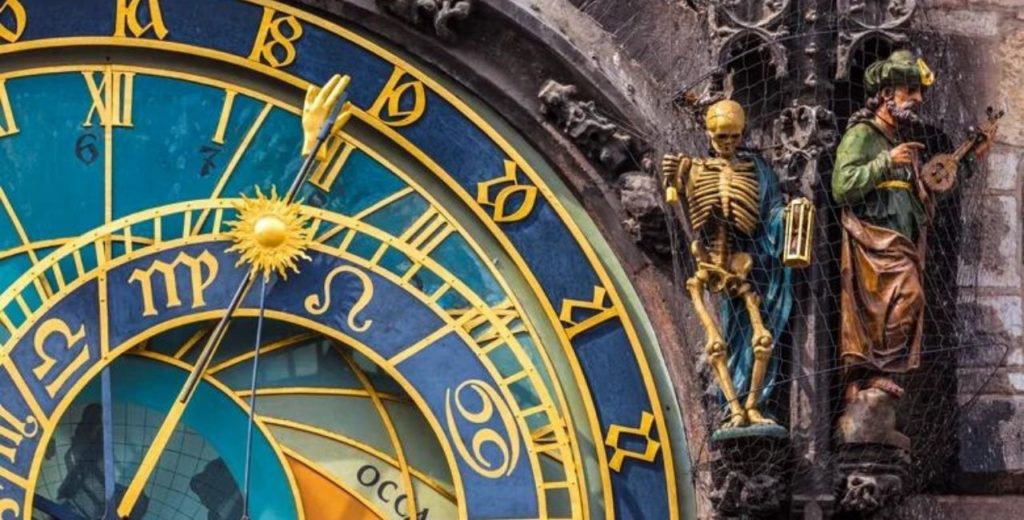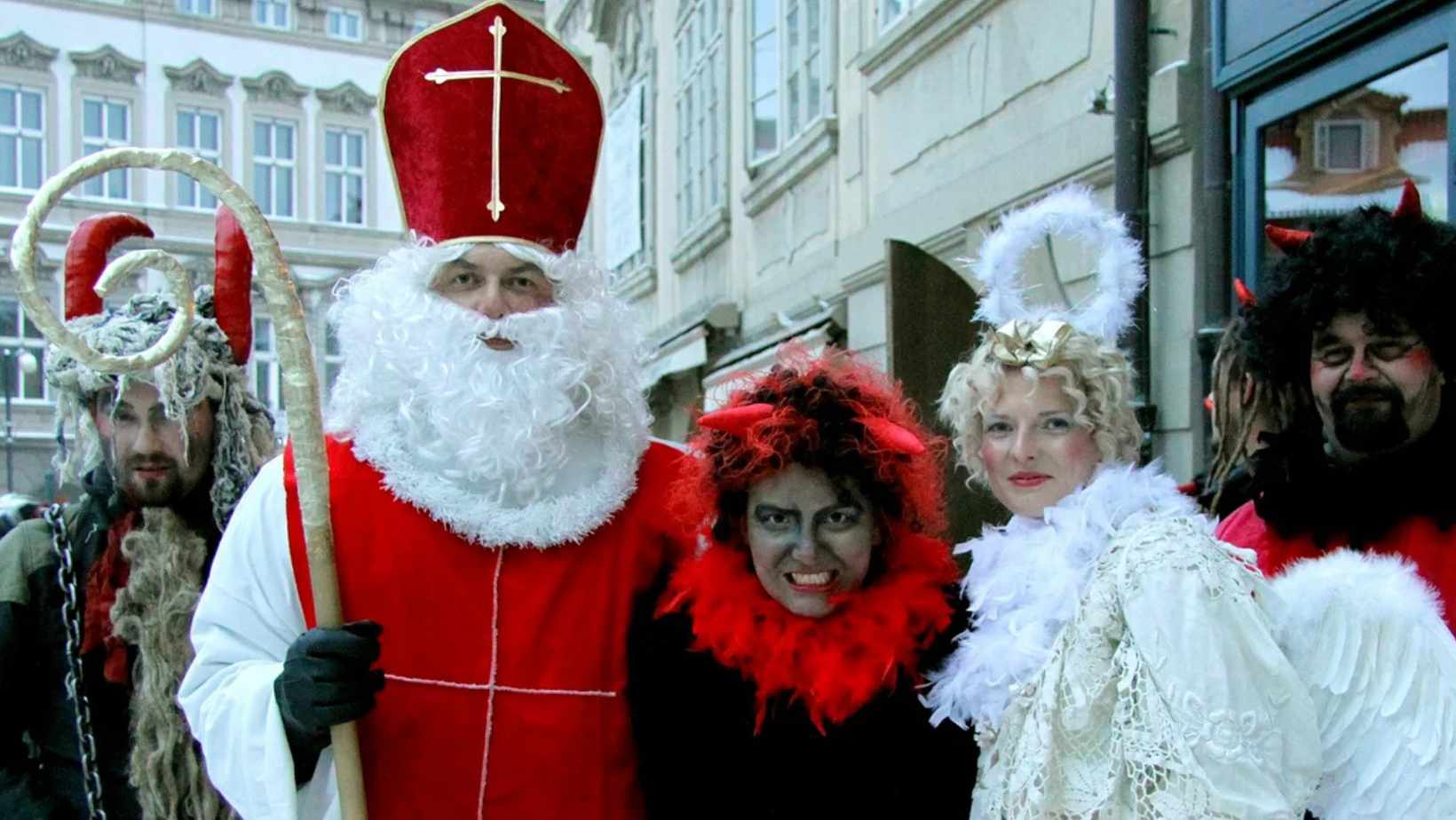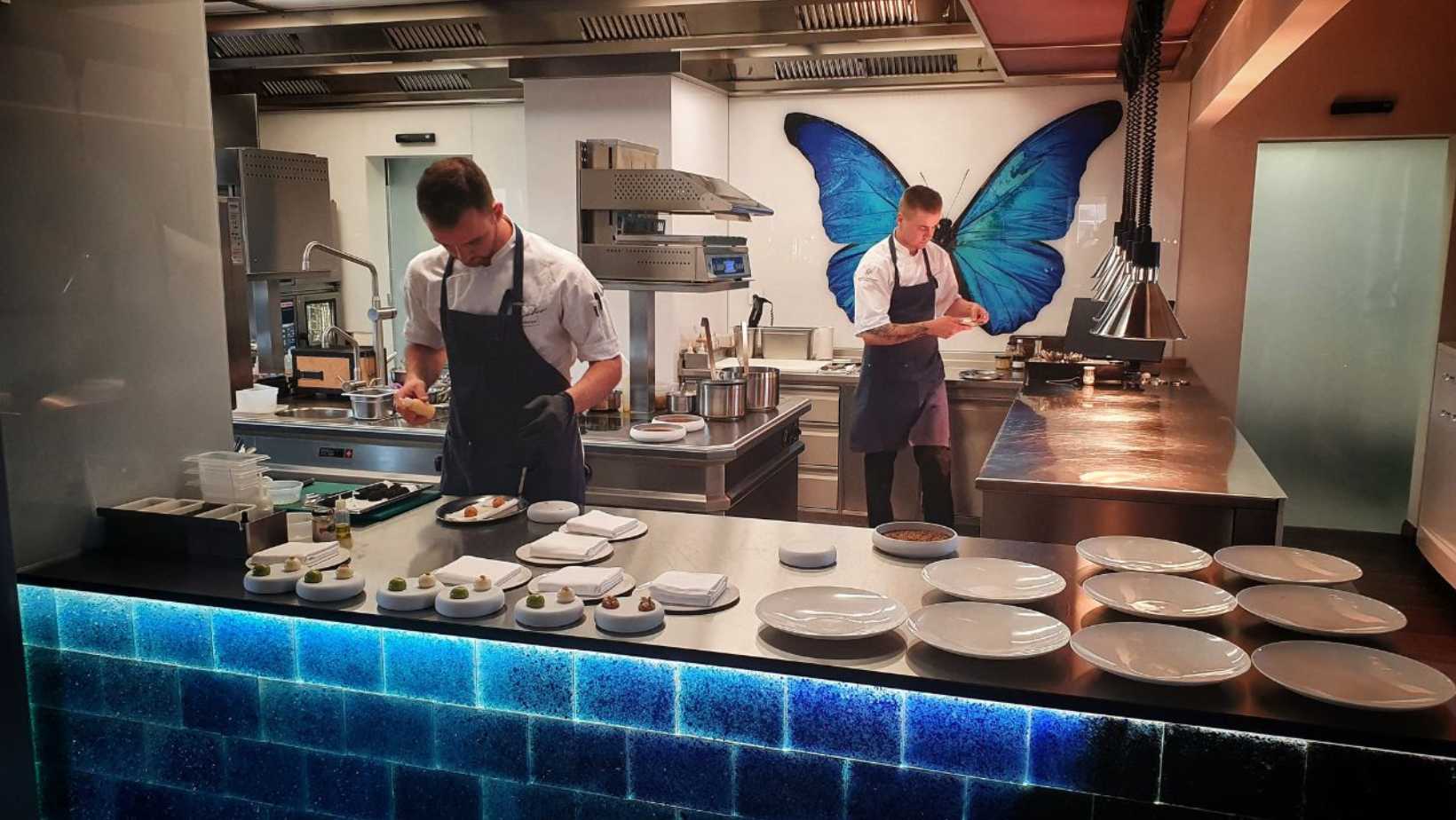Step aside Big Ben, Grand Central Clock, and assorted Rolex products: there’s a new chronographic monarch in town. Actually, it’s a far older timepiece dating back to 1410 on the Town Hall in Prague.
This makes it the 600-year-old, undisputed title-holder of “Coolest Clock in the History of Ever.” “Elegant, sumptuous aesthetics meets timeless timekeeping mastery,” the ad might read.
Prague’s Astronomical Clock, more properly the “Orloj”, is a stunning engineering marvel. From the outside, it looks like a color-coded, multi-layered, brightly painted clock-face of golden whorls and arcane symbolism.
Inside, it’s a brain-bustlingly convoluted mechanism of endlessly churning weights, pulleys, ropes, and gears.
As a multifunctional medieval astrolabe, it tracks “Old Czech Time” (from when the sun sets) using ancient Gothic numerals, the Sun’s intersection with zodiacal signs using Arabic numerals (1, 2, 3, etc.), and “sidereal” hours using Roman numerals (our actual, uncorrected “day” of 23 hours, 56 minutes).
It also depicts the phases of the moon, when the sun reaches its zenith above the Tropics of Cancer and Capricorn, the entire calendar year, and much more.
Every hour from 9 a.m. to 10 p.m. (except for Mondays), tourists can gawk at a procession of moving wooden figures that parade through and without the Orloj.
We’ve got four allegorical entities, Vanity, Greed, Death, and Extravagance, and “The Walk of the Apostles,” featuring all 12. We’d totally crowdfund a wrist-based version if anyone’s up to the task.
A 600-year-old art-and-engineering project
The Orloj isn’t the world’s only astronomical clock, but it tends to get the most attention for its undeniable complexity, gorgeous artistry, and ornamental features like the moving figures of the 12 apostles.
Frankensaurus lists a whole bunch of astronomical clocks in cities through France, England, Sweden, Poland, and more. Many of them date back to Europe’s Late Medieval period starting roundabouts 1250-1300 CE.
To survive to the present, the Orloj had to endure quite a bit of punishment, tinkering, and upgrades. As Barcelo states, the original astrolabe dates back to 1410, the by-product of the team effort of Mikuláš of Kadaň, a clockmaker, and Jan Sindel, professor of Astronomy at Charles University in Prague. Century by century, the Orloj had components added to it.
It malfunctioned in 1552 and had to undergo maintenance, had some moving parts added in the 17th century, and the apostles added in 1865. Czech painter Josef Mánes (1820-1871) was responsible for adding the clock’s “twelve medallions,” such as its four lower figures: the philosopher, angel, astronomer, and chronicler.
In 1945, Prague’s Old Town was incinerated by spiteful, rampaging Nazis as soon as they realized they were going to lose World War II. Certain Orloj features, like its wooden figures, had to be completely remade. The current reconstructed clock was revealed in 1948. Since then, the Orloj, Prague’s Town Hall, and Prague itself have thankfully avoided any disasters or depredations.

An hourly show of saints, skeletons, and roosters
When the hour strikes, little doors on the top of the entire apparatus open up and show the twelve apostles shuffling in a procession, heads down.
At the same time, Death the skeleton rings a bell, while the mandolin-playing guy next to him, Extravagance, bobs his head to some unknown tune.
On the other side, Greed waggles his cane and money-bag around, while Vanity on the far left admires himself in a mirror. At the end, a golden rooster at the top (added around 1865) crows, which we assume is an allusion to the Biblical story of Peter denying Jesus. Then the tower’s actual bell gongs.
The bottom, less-dynamic face marks the individual days, as well as each saint’s feast day. It also depicts the passing of the four seasons, the 12 signs of the zodiac, and has the philosopher, angel, astronomer, and chronicler figures next to it.
-
NEWSLETTER
Subscribe for our daily news











